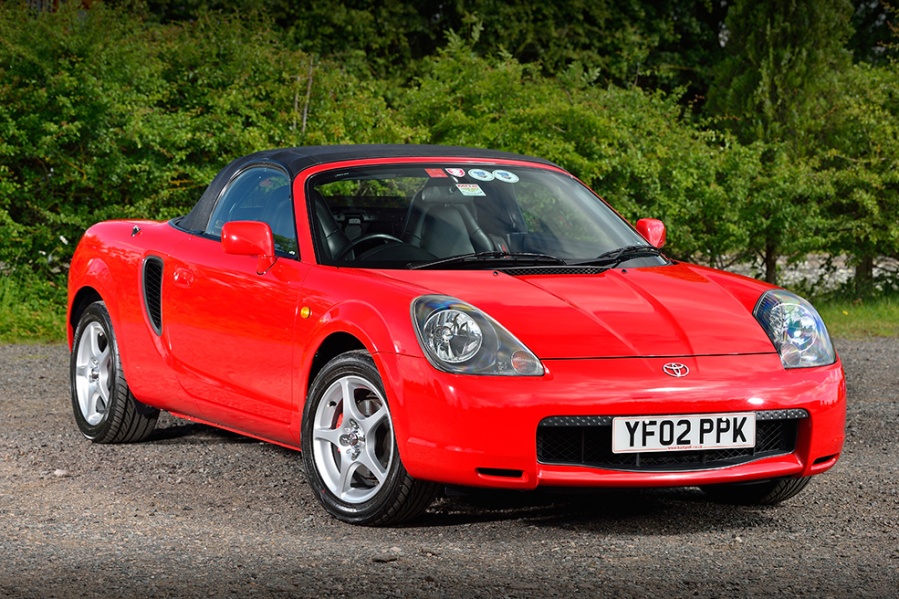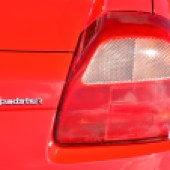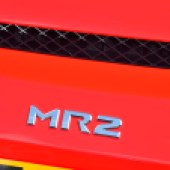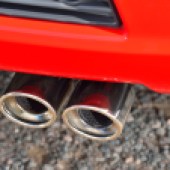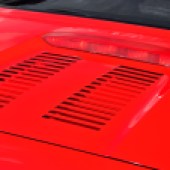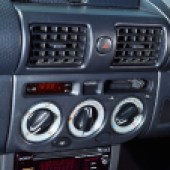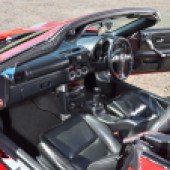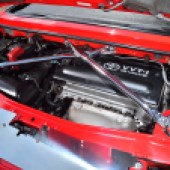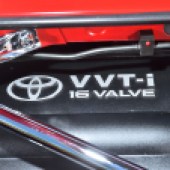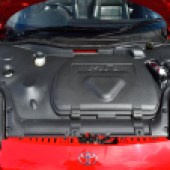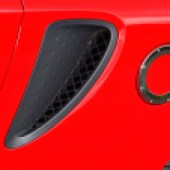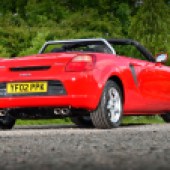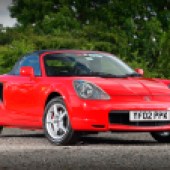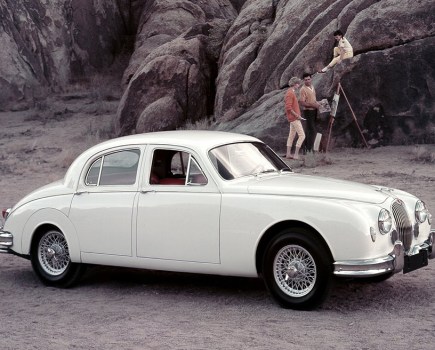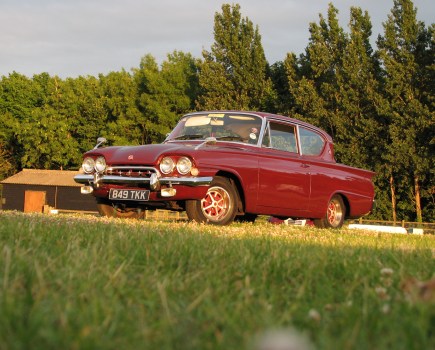The third generation of the Toyota MR2 was a very different animal from its predecessors – and is great value today. Here’s what you need know if you’re thinking of buying one
Toyota’s third-generation MR2 made its debut in Japan just days before the 1999 Tokyo Motor Show, coinciding with the month Toyota celebrated producing its 100 millionth passenger car. In its home market it carried the same ‘MR-S’ name as the concept shown the previous year, but in Europe it was sold as the MR2 Roadster and in the USA as the MR2 Spyder.
Remarkably, the new model tipped the scales at considerably less than the first-generation car (from 960kg), despite offering a generous equipment level. This weight saving was achieved in part by deleting the rear boot – and therefore the fifth bulkhead. Instead, Toyota improved practicality by adding a full-width 78-litre storage compartment behind the seats.
As part of Toyota’s global strategy to streamline production, a single engine was offered worldwide: the all-alloy 1.8-litre DOHC 16-valve VVT-i 1ZZ-FE, shared with the seventh-generation Celica. With 138bhp available, the MR2 was well powered and offered the best power-to-weight ratio in its class. Motoring journalists praised its dart-like responsiveness through all major controls and its exceptional handling balance.
Like its predecessor, the Mk3 MR2 attracted strong interest from Toyota-affiliated tuners and Japan’s aftermarket. Limited-run specials such as the Modellista Caserta, VM180 TRD, VM180 Zagato and TOM’S W123 were all produced in very small numbers.
The most significant official update arrived in 2001, when the standard manual gearbox was joined by an optional five-speed (later six-speed) SMT ‘Sequential Manual Transmission’. This was the first sequential gearbox fitted to any Japanese production car, and with its automatically actuated clutch, drivers could shift gears without lifting off the throttle.
A global downturn in the sports car market during the early 2000s inevitably hit MR2 sales. Annual volumes that had begun in the tens of thousands fell to thousands and eventually mere hundreds. Sales of both the MR2 and Celica ended in the USA and Australia after the 2005 model year, but continued in Japan, Mexico and Europe until production ceased in 2007.
Styling is always subjective, and the Mk3’s appearance has divided opinion since launch. Some appreciate its neat, sculpted curves, with a few even suggesting the nose carries a hint of Porsche. In a rear-view mirror, it’s not impossible to momentarily mistake it for a Boxster.
Ultimately, though, a car’s real appeal lies in the drive – and the Mk3 delivers. For affordable, wind-in-the-hair motoring it’s hard to find a better companion. Around town the MR2 is genuinely pleasant: comfortable, with excellent visibility. Power steering makes tight, low-speed manoeuvres effortless, and its compact footprint means parking it is an absolute doddle.
Toyota MR2 Mk3 values
Mk3 MR2 values remain refreshingly attainable, especially compared with the soaring prices of the MX-5 and earlier MR2s. Project cars can still be found for well under £1000, though most will need attention to tired suspension and neglected servicing. Usable, MOT’d examples typically sit between £1500-£2500, offering lightweight, roof-down fun without breaking the bank. The very best cars – low-mileage, rust-free and meticulously maintained – are now edging towards £5000-£8000, yet still represent strong value given their mid-engined layout and reliability. As enthusiasts wake up to the Mk3’s abilities, tidy cars are increasingly being snapped up.
Insurance Costs
2001 Toyota MR2, £3000 value
Example quote: £109.97 or £127.97 with Agreed Value.
Quotation supplied by Lancaster Insurance. Tel: 01480 400761
Quote based on a 45-year-old marketing manager, access to another car, no claims or convictions, club member, 3000 miles per year, no modifications, living in SP2 0HL. Disclaimer: Subject to underwriting criteria. An additional charge may be payable. Authorised and regulated by the Financial Conduct Authority.
Bodywork
When it comes to bodywork, the good news is that the exterior panels bolt directly onto the main shell, meaning that if any panels are damaged, they’re comparatively straightforward to replace. Even so, inspect any car that’s had previous damage for uneven panel gaps or substandard repairs.
The standard-fit soft top features a rear glass window, helping shield the interior from the elements. Check carefully for any tears in the hood before committing to a purchase – or refer to our video guide above if you’re buying a project and fancy replacing it. Some cars were equipped with the optional hard top, which also brought factory air conditioning. These examples tend to command a premium.
That said, make sure you verify whether the hard top was fitted by an owner or specified from new, as Toyota sells the mounting brackets separately for those looking to retrofit one later.
The hood itself uses a simple unclip-and-fold-back mechanism with little to go wrong. It’s generally robust, but do inspect around the rear window, as cracks can occur if the hood has been folded incorrectly. A wind blocker lifts up from behind the seats to reduce unwanted cabin buffeting.
Don’t forget to check the hood drain holes, which exit through the side-mounted air vents. These can clog up, allowing moisture to seep into the cabin behind the seats. It’s worth clearing the drains annually; accessing the plugs and flushing them through is an easy task, though aftermarket vent covers can make reaching the drain plugs a bit more awkward.
Engine and transmission
The most significant Mk3 MR2 engine concern is pre-cat failure, which is far more common on pre-facelift models (built before 2003). The problem stems from the catalytic converter breaking up within the exhaust manifold, with debris potentially being drawn back into the engine. This can lead to catastrophic damage and hefty repair bills. Always ask whether the pre-cats have been removed or replaced recently to avoid major headaches. Most owners choose to run a de-cat pipe, as the main catalytic converter is usually sufficient for an MoT pass.
Typical symptoms of pre-cat issues include an illuminated lambda (oxygen) sensor warning light and noticeably high oil consumption. Facelift cars received revised piston rings and a more robust catalyst matrix, but that doesn’t guarantee immunity from the problem.
Another frequent Mk3 MR2 fault is oxygen sensor failure. The car uses three sensors in total, but the troublesome one is positioned after the main catalytic converter. Access is awkward and an OEM replacement from Toyota can cost around £150, although aftermarket alternatives are available for much less.
Overall, the 1ZZ-FED engine is a dependable unit that delivers lively performance. Enthusiasts seeking extra power often choose to swap in the supercharged 1.8-litre 2ZZ engine used in the Lotus Elise. Some go further and fit the V6 Camry engine, though this requires gearbox modifications to handle the added torque.
Suspension, steering and brakes
The Mk3 MR2 employed a steel monocoque chassis paired with MacPherson struts, dampers and an anti-roll bar at the front. At the rear, Toyota fitted dual-link MacPherson struts with matching dampers and an anti-roll bar. Early Mk3 cars ran 185/55 VR15 tyres up front and 205/50 VR15 items at the rear, while facelifted models gained larger rear wheels wrapped in 215/45 VR16 rubber.
Despite few complaints regarding rigidity in the original third-generation MR2, Toyota strengthened the facelift version with additional bracing to both the front and rear suspension, increasing overall structural stiffness. At the same time, revised spring and damper rates were introduced to fine-tune ride and handling characteristics – largely to complement the shift from 15-inch to 16-inch rear wheels.
It’s also worth stressing that the MR2 is notably sensitive to tyre pressures. Even small deviations – whether under-inflated or over-inflated – can have a pronounced effect on how the car drives.
For 2004, Toyota further improved body rigidity by adding new crossmembers beneath the front end to enhance occupant safety during crash testing. Extra bracing was fitted behind the rear bumper, along with updated rear struts and strengthened floor-to-sill sections. Additional improvements to the floorpan and transmission tunnel helped stiffen the bodyshell still further.
A surprisingly important area to inspect when buying an MR2 is the wheels. The aluminium alloys are prone to pitting and corrosion more readily than many others. Aside from looking untidy, this can weaken the wheel itself – and with Britain’s pothole-ridden roads, the risk of cracking is not something to ignore. If the alloys show corrosion, it’s wise to budget for a refurbishment or a replacement set. Generally, though, the chassis is robust, and as most examples are still under 20 years old, major rust concerns are far less common than with older classics.
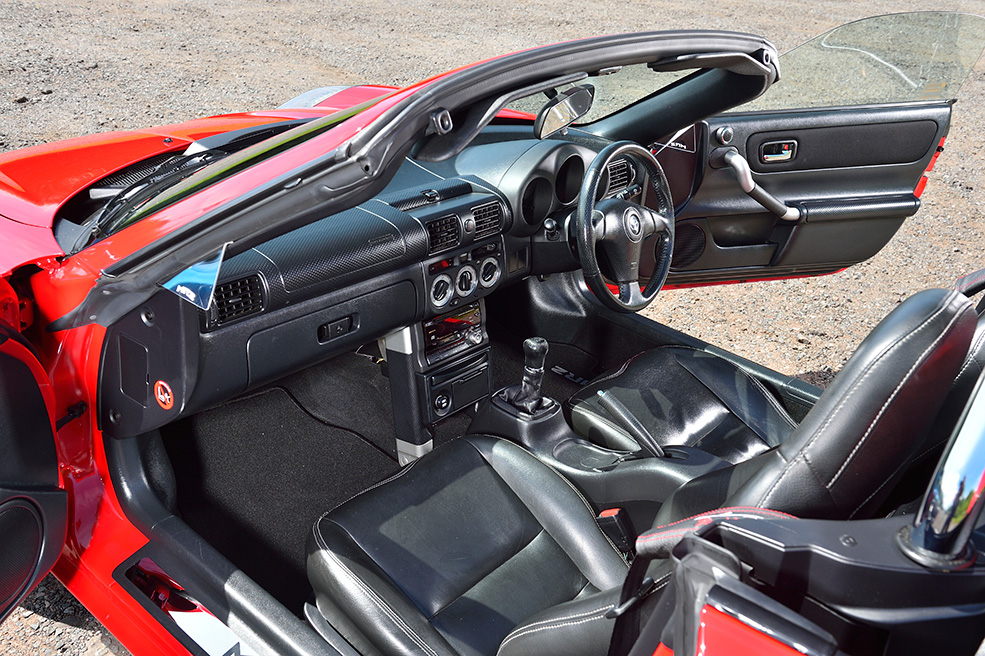
Interior and Electrics
At launch, the Mk3 MR2 was fitted with fabric seats that slide fore and aft, with backrests adjustable for angle. The seat backs also tip forward, giving access to the fold-out panels that open onto the full-width storage bin – effectively the car’s main luggage compartment. There’s a secondary cubby beneath the front bonnet, but it’s far too small to be of any practical use for carrying bags. The main luggage area is admittedly awkward to reach, yet it’s more spacious than you’d expect. Just don’t plan on squeezing a set of golf clubs in there.
Aside from the familiar assortment of rattles that most MR2s seem to develop, the cabin is solidly built and impressively durable. All the electrical equipment should operate exactly as intended, so any example with faulty windows or a non-functioning stereo may well have suffered from poor repairs in the past.
The 2003 facelift brought subtle enhancements, including chrome accents on the air vents, heater controls and door handles, plus more supportive seats. These later cars also gained a refreshed typeface for the dials and switches, along with a Toyota-branded head unit in place of the original Sony CD stereo.
Toyota MR2 Mk3: our verdict
In a market where Mazda MX-5 prices have surged and tidy Mk2 MR2s have all but vanished, the Toyota MR2 Mk3 suddenly looks like a very sensible option. A well-cared-for example can still be found for a modest four-figure outlay and – provided it’s been maintained properly and kept clear of corrosion – will deliver plenty of top-down motoring for many summers yet. At this end of the market, few sports cars can rival the compact Toyota for its blend of robust engineering and pure, uncomplicated fun.
Out on the road, the MR2 more than holds its own, whether keeping pace with modern traffic or threading along a B-road with precision. Turn-in is crisp and the brakes offer reassuring bite. If there’s a criticism, it’s the engine’s slightly muted character; while it’s happy to rev, it never sounds entirely enthusiastic about it. It’s easy to understand why some owners favour the 1.8-litre unit also used in the Lotus Elise, which feels keener and delivers a more appealing note.
Unexpectedly, the MR2 is almost practical as well. Behind the seats sit two removable storage hatches, offering just enough room for a set of golf clubs. Here’s a quirky detail: Japan has a deep love for golf, and the ability to carry clubs is genuinely considered a selling point by many Japanese manufacturers. If you’ve ever examined the small interior stickers on certain Japanese cars – particularly grey imports – you’ll often spot one proudly noting that the car can accommodate golf clubs, complete with an English translation alongside.
MODEL TIMELINE
1999
Global debut of the third-generation MR2 (MR-S in Japan, MR2 Roadster in Europe). Production starts in Japan.
2000
UK launch with a 1.8-litre 1ZZ-FE engine and five-speed manual gearbox.
2002
Major facelift with revised bumpers, stiffer body, six-speed manual option, SMT automatic gearbox, and handling improvements.
2003
Torsen limited-slip differential offered as an option, body strengthened and ride height raised by one inch for crash safety.
2006
Final UK model year as sales taper off.
2007
Production ends, closing the chapter on the MR2 line and pausing Toyota sports car production until 2012’s GT86.

